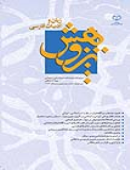سيره پيامبر(ص)، معيار عرفان اسلامي بازتابيافته در متنهاي صوفيانه فارسي
محورهای موضوعی : پژوهشهای ادبیات کلاسیک ایران
1 -
کلید واژه: پيامبر(ص) تاريخ تصوف تصوف, عرفان نقد تصوف,
چکیده مقاله :
تصوف اسلامي بر مبناي چه محورهايي شكل گرفته است، و بر اساس كدام شاخصها و معيارها مسير حركت خود را تنظيم كرده و خطاهاي خود را چگونه اصلاح نموده است؟ بررسيها نشان ميدهد منشأ عرفان و تصوف اسلامي، منحصراً قرآن و سيرت پيامبر است؛ اما در مسير حركت خود، از آداب و رسوم و ديدگاههاي ساير ملل نيز متأثر شده است؛ و اينكه بعضي ـ هر چند با دیدگاههای مختلف ـ كوشيدهاند مسير عرفان و تصوف اسلامی را به عكس نشان دهند، احتمالاً تحت تأثير برداشتها و ديدگاههاي ديني و سياسي خود بودهاند، يا ـ بسته به نوع نگرش خود ـ خواستهاند با نشان دادن منشأ غيراسلامي براي آن، تصوف و عرفان اسلامي را مغایر شريعت اسلامي يا در كنار آن قلمداد کنند؛ یا به گونهاي آن را معرفي كنند كه نشان دهند سلوك عرفاني سنتي ادب فارسي، بينياز از عمل به احكام شريعت اسلامي است. حال آنكه مستندات فراوان حاكي از آن است كه عرفان اسلامي مستقيماً از قرآن و سيره نبوي، و روش و سلوك اهل بيت و صحابه و تابعين و زهاد صدر اسلام نشئت گرفته است؛ اما بتدريج ديدگاههاي پيروان مكاتب ديگر و آداب اجتماعي اقوام و ملل مختلف و بخصوص خواستههاي نفساني زاهدان و صوفيان ريايي، بر آن تأثير گذاشته است و سبب شده اندک اندک انحرافاتي در آن راه يابد، بنابراين مشايخ بزرگ صوفيه كوشيدهاند از طريق تأليف كتب متعدد و ارشاد مريدان، مسير عرفان نظري و عملي را بر مبناي معيار و شاخصه اصلي آن، يعني قرآن و سيرت پيامبر اكرم اصلاح كنند و آن را به مسير اصلي خود بازگردانند تا عرفان و تصوف اسلامي همچنان بتواند در شاهراه اصلي خود به مسيرش ادامه دهد.
This research intends to respond to this question; due to the fact that Quran says; "it was spoken to him", "he does not speak of lust and likes", and " you have an excellent morales", would Prophet Mohammad speak of epigrams and funny words? If so, then what category would Prophet's epigrams would fit in? What elements were mostly used in them? Has the Prophet considered any limitations for such epigrams? This research shows that at that time, Prophet Mohammad did mean to speak funny and witty words. However, he never violated moralities. The prophets' witty words are categorized in two groups; first are the wise witty words with a advice; and the second groups are the general witty words that are less complicated. The general witty words are two kinds; the witty words of "situation" and "phrasal" ones. The phrasal ones include linguistic rhetorical ones such as puns and ambiguities, brevity, creating wonders in the language and behavior, paradox and antithesis. Also part of these witty words is instructional. The prophetical witty words are mostly linguistic and phrasal ones, symbols, and emblems, intending to humiliate and insult others, and rarely seen in them. Nevertheless, since at times, the term "witty words" is used in the domain of offence, insult and humiliation or even the social matters, and the prophet's lofty character is superior to any of this, no one has ever categorized the dear Prophet's words at all. The writer of this research has called all the Prophet's witty linguistic points, comments and words "witty" to be polite within the religious borders without any exception. Keywords: Persian Literary Texts, Verbal Witty words, Prophet Mohammad. Miracles of Prophet Mohammad in Persian Poetry Ahmad Goli* As Rumi says, the irrationality or even the ultra-mind nature of the Prophet's learning and discourses, have made the miracles a necessity. At each period, these miracles have coordinated with the rate of people's understanding; depending on the invitation the prophet has made. The Holy Quran is the major miracle of Prophet Mohammad; and it asked the pagans and enemies to compete with it; the Islamic term for this is "Tahaddi". Of course, Quran had already predicted and even emphasized on the failure and definite inability of these dissenters. What is more, due to special events and occasions, other miracles occurred through the prophet; or even occurred for his dear sake. The books that discussed the prophet's manners and his words and sayings (Hadiss), reflected all this. And as a result they were also revealed in the Persian texts. This paper intends to analyze and express these issues within the four major areas.


